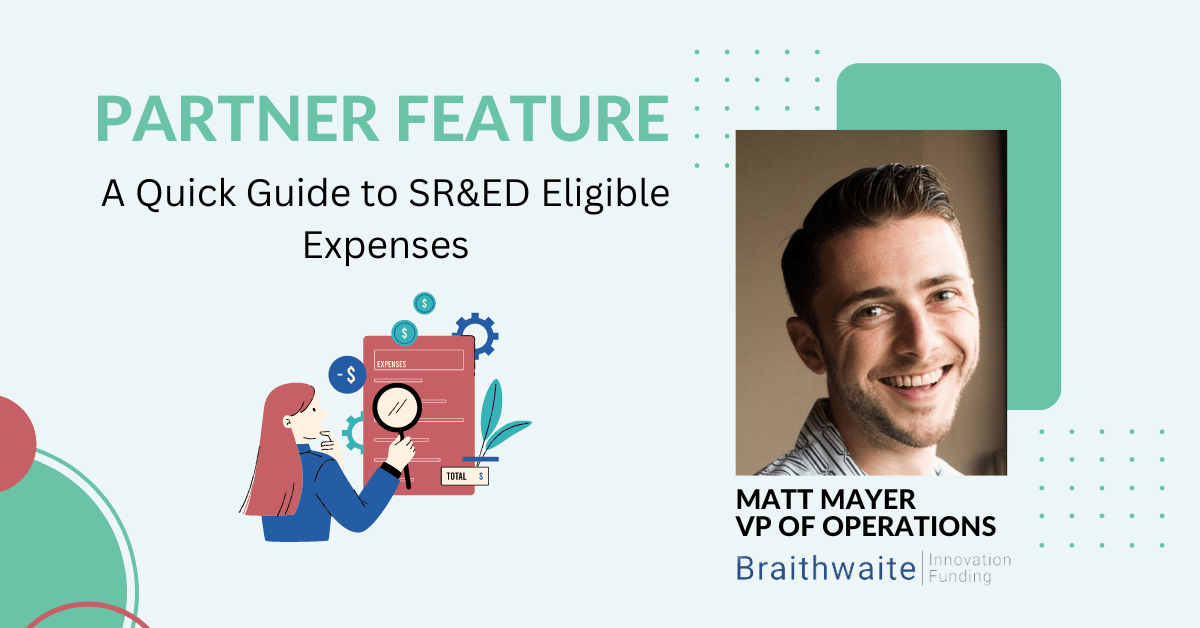Reading time: 4 minutes.
Completing your Scientific Research and Experimental Development (SR&ED) tax claim can be complex. However, some of the most common mistakes will prevent companies like yours from receiving your maximum tax credit. While countless resources focus on what type of businesses qualify, how to choose a consultant and core details about CRA reviews, it’s not as typical to come across the common mistakes that hold companies back when applying.
Each year, simple errors cost businesses valuable time and resources when maximizing their refund and can cause further delays in receiving their capital. At Venbridge, we know just how important it is to avoid these mistakes and have a plan in place that allows you to overcome the waiting period between acceptance and the arrival of your capital, which can often take weeks or even months. Below, we’ll look at some of the most common culprits of unsuccessful applications and how to avoid making the same mistakes when you apply. Read on to learn more!
Selecting the Right Kind of Corporation
When filling out your application, it is vital for businesses to select the right corporation type for tax purposes. Canadian Controlled Private Corporations (CCPCs) are eligible for refundable tax credits with an enhanced investment tax credit; missing out on this designation can be particularly detrimental for companies partnering with non-Canadian investors, which can trigger non-CCPC status. Missing out on this designation can cost you vital funding and derail your SR&ED application before it starts.
Knowing What Expenditures Qualify
The main benefit of the SR&ED program is to offset the high costs of expenditures directly related to your R&D efforts. Eligible expenditures tend to be one of the biggest points of confusion for applicants, so for clarity; it is essential to note that the following are eligible expenses:
- Salaries and benefits paid to R&D/developer staff
- The cost of materials
- Payments made to third parties
- Contractor costs
- Trial runs on test equipment
- Research facility costs (including utilities and property taxes)
Knowing the Application Deadline
SR&ED applicants have up to one year from filing their year-end income tax to apply for credit. It is important to note that applications are reviewed on an annual basis. Therefore, to ensure you get the maximum refund possible, you’ll want to ensure your income tax documentation is as accurate and detailed as possible.
Poor Documentation
One of the biggest sources of denied applications and/or CRA reviews (more on that below) is insufficient or improper documentation. Applicants must remember that the CRA is concerned with being able to verify that your work is directly involved in R&D efforts that fit their qualifying parameters. Your documentation should clearly, and thoroughly display links between R&D activities, time spent, materials used, employee roles and more to justify all expenses and claims made within the scope of the SR&ED program. Those who are unsure of how to document their project best may benefit from partnering with an external SR&ED consultant that has the expertise needed to refine and file claims on your behalf.
Missing Line 429 (Provincial/Territorial Assistance)
Line 429 on the T661 form is designated to claim provincial/territorial government assistance, which also includes any anticipated SR&ED or R&D credits you expect to receive during the tax year. Line 429 also applies to other forms of provincial government assistance, including grants and subsidies. Failure to include details about provincial/territorial provided support can lead to your applicator being flagged as incomplete and create other complications with the CRA.
Not Anticipating a Review
If you continuously apply for SR&ED funding, it is inevitable that, eventually, you will be reviewed. CRA reviews don’t necessarily indicate that you’ve done anything “wrong” but simply allow the government to ensure that all applicants are completely forthcoming and fully aligned with the program’s objective. When you prepare your application, a good run of thumb is to prepare airtight documentation that would easily defend your project in the case of an audit. Doing so will set you ahead when it matters most and ensure that your application has the best chance of moving forward, even in the absence of a review.
Not Having Interim Funding Solutions Options
SR&ED applicants not only have to contend with the waiting period between the CRA approving their SR&ED claim and receiving their refund. They also need to be aware of the considerable delay that can exist between the time of the expenditure and when they receive their refund, as companies have up to 18 months to claim their eligible expenses.
Partnering with a firm like Venbridge can help you bridge the significant gap during this waiting period and ensure you have cash flow when it counts.
When you partner with Venbridge, you gain access to a proven lender with a long history of success stories and capital that is ready to use in as little as 2-3 business days once our underwriting team approves you. If you have a minimum of $100k on your SRED claim and generally one year of filing history, our accelerated due diligence process can give you the capital you need to keep operations running in less than a week, giving you peace of mind and autonomy when it matters most.
Learn how we can partner with your team to enhance your R&D initiatives through Venridge’s SR&ED financing by contacting our team today!




